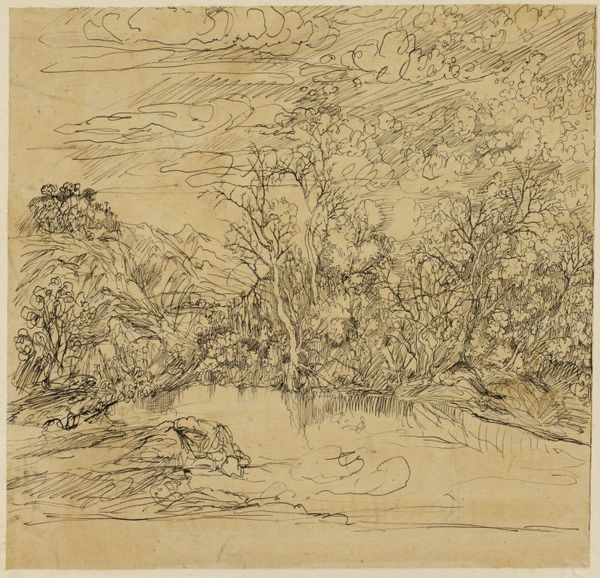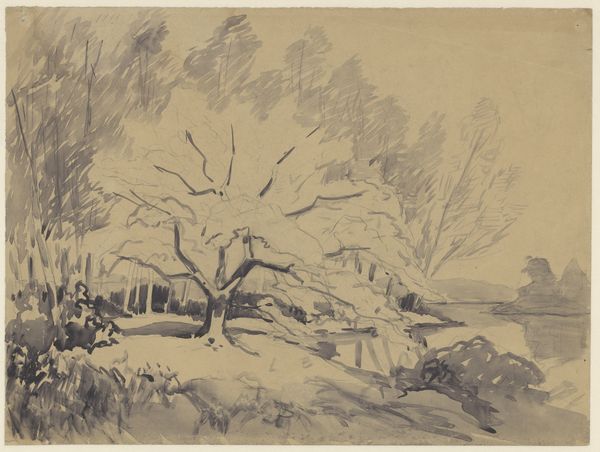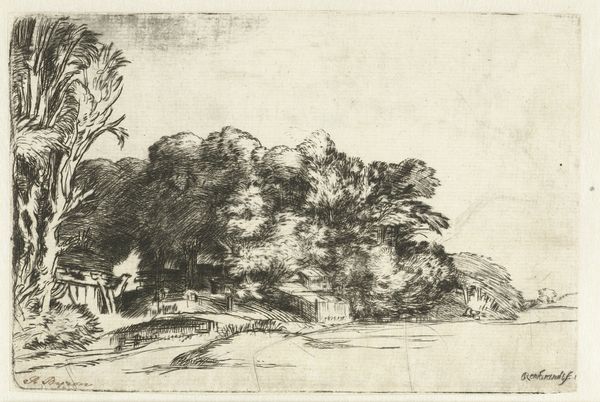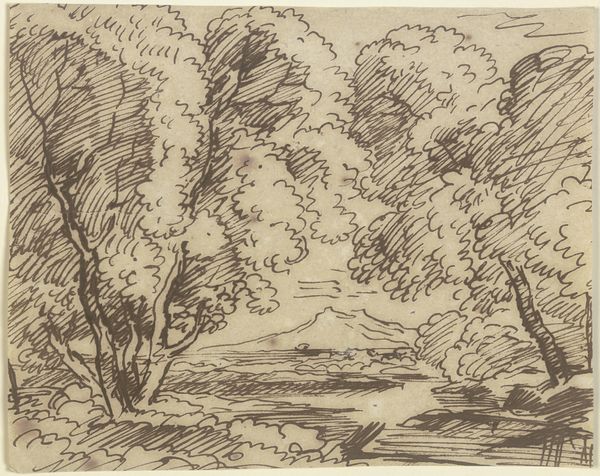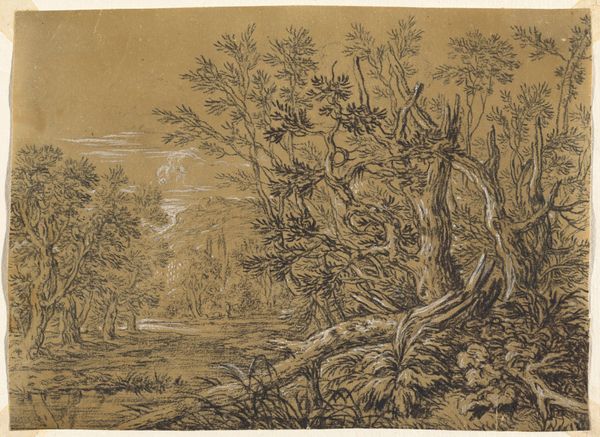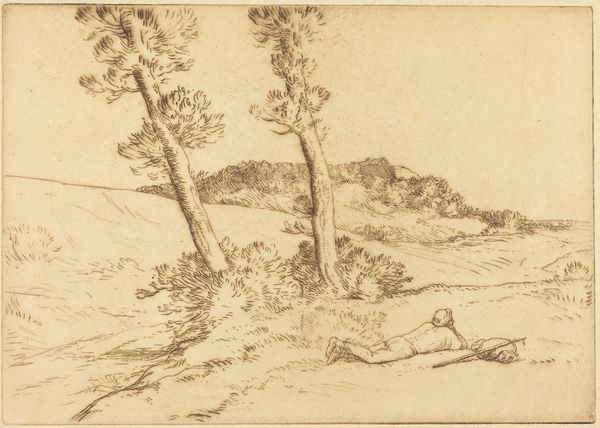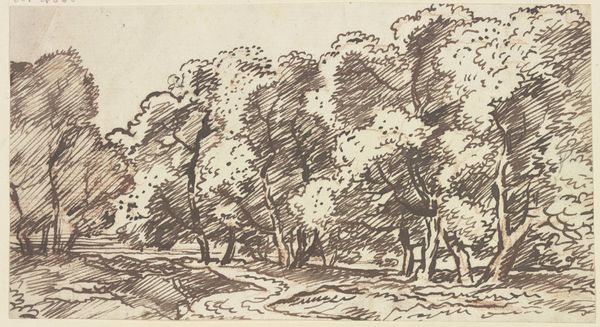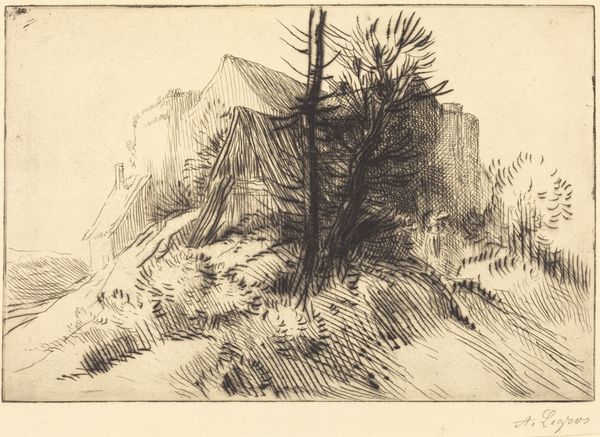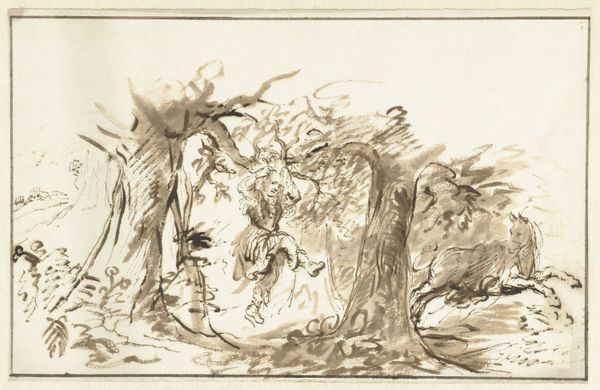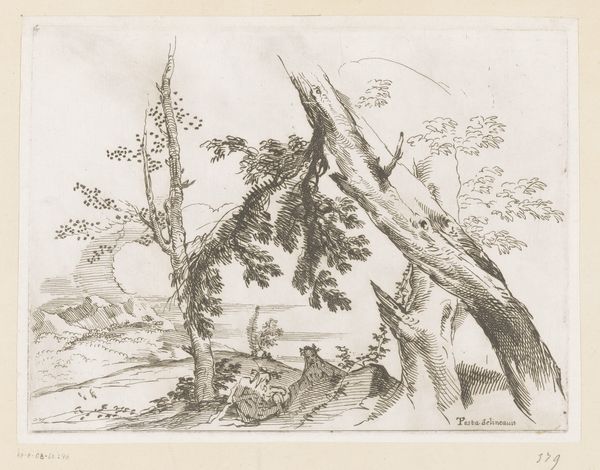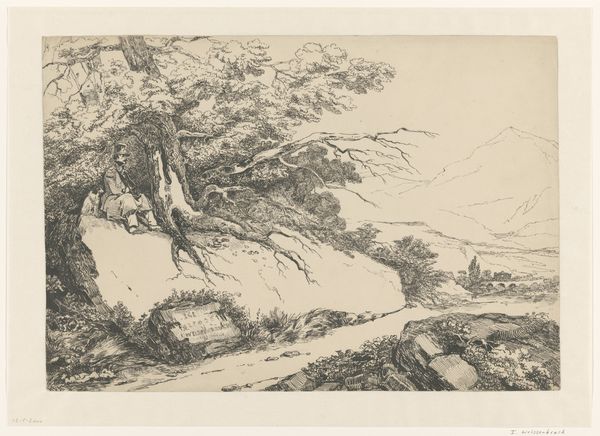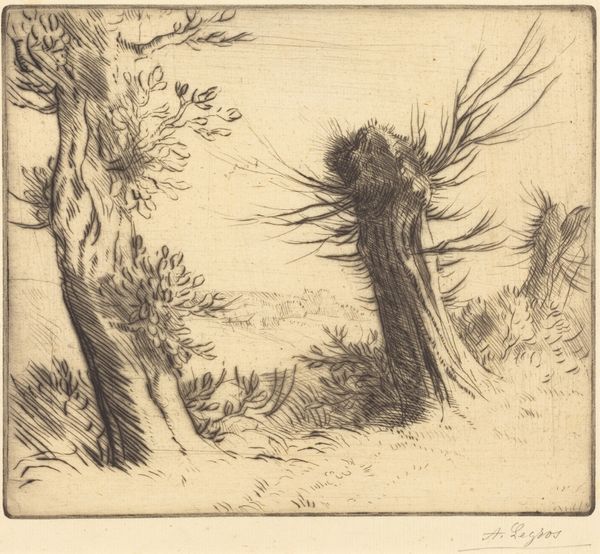
drawing, print, paper, ink
#
drawing
#
narrative-art
#
baroque
#
ink painting
# print
#
landscape
#
figuration
#
paper
#
ink
#
men
Dimensions: sheet: 7 1/2 x 9 11/16 in. (19 x 24.6 cm)
Copyright: Public Domain
Editor: This is Pier Francesco Mola's "Landscape with Two Men Under a Tree," made with ink on paper sometime between 1612 and 1666. The sweeping brushstrokes create such a feeling of movement, especially in the tree. What do you see in this piece? Curator: I see a reflection of the Baroque period's engagement with classical ideals, but also a subtle challenge to them. Consider the pastoral theme: idealized rural life was often employed to mask or critique the social realities of the time. These figures, resting under the tree, might be read as an allegory for the unequal distribution of leisure and labor. What power structures are subtly hinted at in the seemingly simple landscape? Editor: That's interesting, I hadn't considered that! It feels like I'm always told that landscape paintings from this time were merely pretty scenes to look at, a backdrop to a narrative. Curator: Exactly. By acknowledging that Mola painted this during the Baroque period, a time of intense social and religious upheaval, can we ask ourselves if this is "just" a landscape? Who gets to rest, and who is excluded? Editor: So you're suggesting the art isn't necessarily just about what's on the surface but rather reflects the power dynamics of society? Curator: Precisely! It’s an invitation to reflect on who benefits from the landscape, both literally and metaphorically. How does Mola's drawing invite us to interrogate similar power dynamics in our own contemporary landscapes? Editor: That’s a great point; looking at the historical context gives it a deeper meaning than I initially grasped. It makes me wonder how much of art history I've missed by just taking things at face value. Curator: Absolutely, and engaging with art history, from a place that is interdisciplinary, ensures we aren't ignoring those very crucial aspects. Art becomes less about aesthetics and more about critical dialogue.
Comments
No comments
Be the first to comment and join the conversation on the ultimate creative platform.
